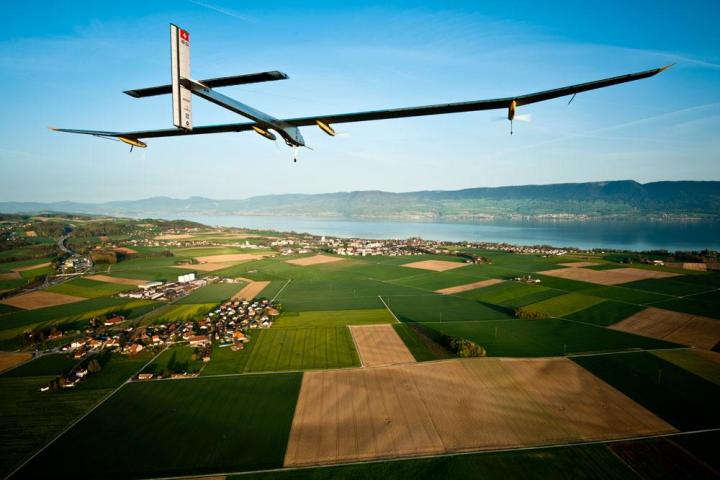
Solar Impulse 2, the Swiss-made plane attempting an around-the-world journey without a single drop of fuel, won’t make it back into the skies till next month at the earliest due to battery damage caused by overheating. The batteries store solar energy during the day which is then used to keep the plane flying at night.
The damage occurred during the aircraft’s recent flight from Japan to Hawaii, a journey that saw Solar Impulse 2 stay in the air for a record-breaking 117 hours and 52 minutes.
The team said over the weekend that repairs could take up to three weeks, meaning an August takeoff date looks likely for stage nine of its epic trip, a 2,920-mile (4,700 km) flight from Hawaii to Phoenix, Arizona.
From Abu Dhabi to Abu Dhabi
Attempting to demonstrate the potential of clean technologies, Solar Impulse 2, whose wingspan is wider than that of a Boeing 747, set off on its mammoth journey in March from Abu Dhabi, with a plan to return there within six months.
But this latest delay, plus another in June that saw the plane land earlier than intended because of deteriorating weather conditions over the Pacific, means the team will be unlikely to complete its trip before the end of the year as it’d hoped.
Solar Impulse 2 is harnessing the power of the sun in its ambitious bid to circumnavigate the globe, with more than 17,000 solar cells covering the plane’s wings producing enough energy for four electric motors to keep the 2,300-kg machine in the air around the clock.
Two pilots – Swiss nationals Andre Borschberg and Bertrand Piccard – are taking turns to fly the plane during its multi-stage trip.
But with a cockpit just 3.8 cubic meters in size, and sleep limited to naps of just 20 minutes, it’s hardly a comfortable ride.
Still, going by their tweets, the pair are enjoying the challenge of not only taking the aircraft around the world, but also of spreading the word about the use and development of green energy.
Editors' Recommendations
- Remarkable imagery shows NASA probe as it’s hit by a solar storm
- World’s most powerful solar telescope begins science operations
- World’s most powerful tidal turbine begins generating electricity
- Harnessing darkness: The race to solve solar power’s greatest problem
- Australia is building one of the world’s largest batteries using Tesla tech


